Stephanie Louise Kwolek (July 31, 1923 – June 18, 2014) was an American chemist of Polish heritage, whose career at the DuPont company spanned over 40 years. She is best known for inventing the first of a family of synthetic fibres of exceptional strength and stiffness: poly-paraphenylene terephthalamide—better known as Kevlar. For her discovery, Kwolek was awarded the DuPont company's Lavoisier Medal for outstanding technical achievement. As of February 2015, she was the only female employee to have received that honor. In 1995 she became the fourth woman to be added to the National Inventors Hall of Fame. Kwolek won numerous awards for her work in polymer chemistry, including the National Medal of Technology, the IRI Achievement Award and the Perkin Medal.
Kwolek was not very involved in developing practical applications of Kevlar. Once senior DuPont managers were informed of the discovery, "they immediately assigned a whole group to work on different aspects," she said. Still, Kwolek continued chemistry investigations of Kevlar derivatives for DuPont. She also did not profit from DuPont's products, as she signed over the Kevlar patent to the company.
Kevlar is used as a material in more than 200 applications, including tennis rackets, skis, parachute lines, boats, airplanes, ropes, cables, and bullet-proof vests.
It has been used for car tires, fire fighter boots, hockey sticks, cut-resistant gloves and armored cars. It has also been used for protective building materials like bomb-proof materials, hurricane safe rooms, and bridge reinforcements. During the week of Kwolek's death, the one millionth bullet-resistant vest made with Kevlar was sold. Kevlar is also used to build cellular telephones; Motorola's Droid RAZR has a Kevlar uni body.
In 1964, in anticipation of a gasoline shortage, her group began searching for a lightweight yet strong fiber to be used in tires.The polymers she had been working with at the time, poly-p-phenylene terephthalate and polybenzamide, formed liquid crystal while in solution that at the time had to be melt-spun at over 392 °F, which produced weaker and less stiff fibers.
This sort of cloudy solution was usually thrown away. However, Kwolek persuaded technician Charles Smullen, who ran the spinneret, to test her solution. She was amazed to find that the new fiber would not break when nylon typically would. Not only was it stronger than nylon, Kevlar was five times stronger than steel.
Capture the full flavor of Grandma's home with these delicious Mini Apple Pies! This quick and easy recipe will fill the house with the glorious scent of apples and cinnamon for that true home cookin' feeling.
- 2 Granny Smith apples, peeled, cored, and cut into small cubes
- 1 tablespoon sugar
- 1/2 teaspoon cinnamon
- 1/4 teaspoon nutmeg
- 1 teaspoon lemon juice
- 1 tablespoon butter
- 2 tablespoons chopped pecans
- 1 (7.5-ounce) package refrigerated biscuits (10 biscuits)
- Preheat oven to 425º. In a medium bowl, combine apples, sugar, cinnamon, nutmeg, and lemon juice.
- In a large skillet over medium heat, melt butter; add apple mixture and cook 5 minutes, or until apples are soft, stirring occasionally. Remove from heat and stir in pecans.
- Place biscuits on a flat surface and press with fingertips to flatten. Equally divide the apple mixture into the center of each biscuit and fold dough over to form a half moon. Using a fork, crimp the edges to seal, then place on a baking sheet.
- Bake 8 to 10 minutes, or until golden brown.

In the United States, the day after Thanksgiving has become known as Black Friday and is considered the official kick-off for holiday shopping. Retailers across the country slash prices, offer doorbuster deals on popular big-ticket items, and often open in the wee hours of the morning to extend early bird specials. Dedicated and thrifty shoppers line up outside the stores to be the first to grab that special deal or this season’s popular and hard-to-find gift.
Despite being the traditional kick-off to holiday shopping, Black Friday isn’t the only day retailers slash prices. These days, many retailers begin deals and specials right after Halloween. Many also offer special, exclusive deals to their online or app-using shoppers.
HOW TO OBSERVE
Get out for those amazing Black Friday deals.
There are several ways to maximize your Black Friday shopping success:
- Plan ahead. Scour the ads both online and in newspapers.
- Prioritize the wish list. Which item will you save the most if you can nab it?
- Check to see if any of the deals are available online. Why stand in line when you can order from the comfort of your home?
- Compare lists with friends and family. We can’t be in two places at once, and not all the deals on your lists will be at the same store.
- Coordinate with your group to divide and conquer. Work as a team to maximize successful shopping.
- Make sure there isn’t a purchase limit. If there is, make sure the team for that store is big enough to obtain the required number of bounty.
- Set the alarm clock. Some of the best Black Friday deals start soon after midnight.
- Dress warm if you are located in the colder regions of the country.
- Pack a snack, a thermos of tea or coffee, and maybe even a lawn chair. Those lines and the wait get long.
- Work in pairs. You don’t want to lose your place in line if nature calls.
Black Friday shopping just isn’t your style? That’s okay. Then all you will need for that is an internet connection and a credit card.
BLACK FRIDAY HISTORY
The origin of Black Friday is derived from the enormous amount of sales retailers report which can often bring their profits into the black. Black in accounting is used to describe a business making a profit as opposed to being in the red denoting losses.
Before 1980, the term Black Friday had a more ominous term in sports. It was considered a curse. For example, in 1981, on March 13th (an unlucky Friday) the 76ers lost for the second Friday the 13th in a row. Sportswriters used the term Black Friday in reference to their bad luck.
In another reference, the term described the dread of employees who would potentially be without jobs on a Friday. It also reflected the darkest and widest spread financial impacts – the fall of Wall Street. The Black Friday of 1869 may be the earliest use of the term.






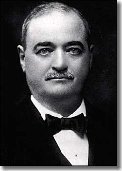
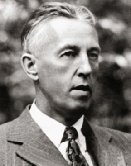
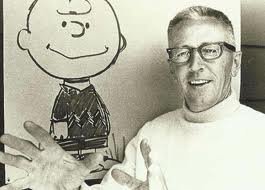
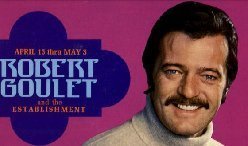

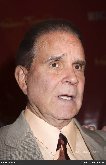

No comments:
Post a Comment